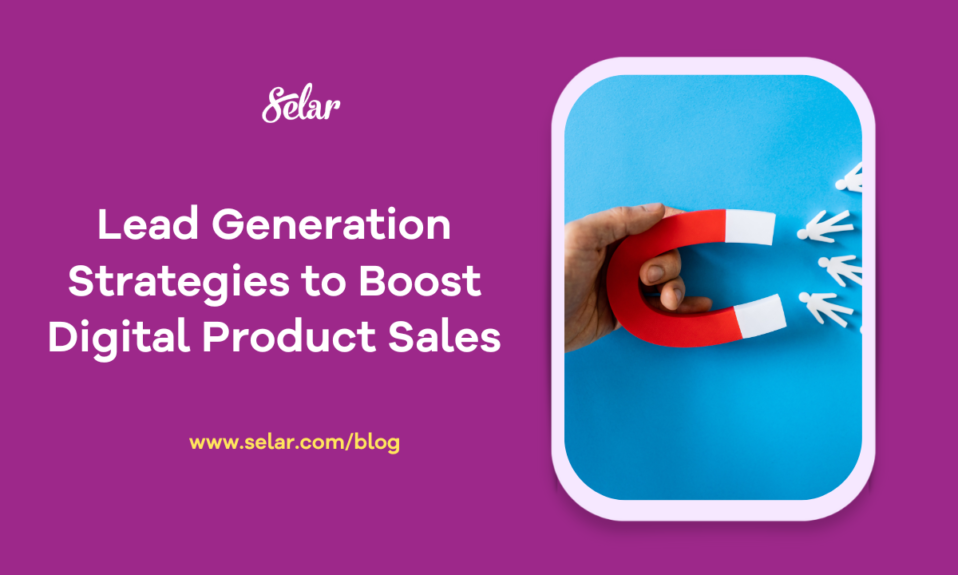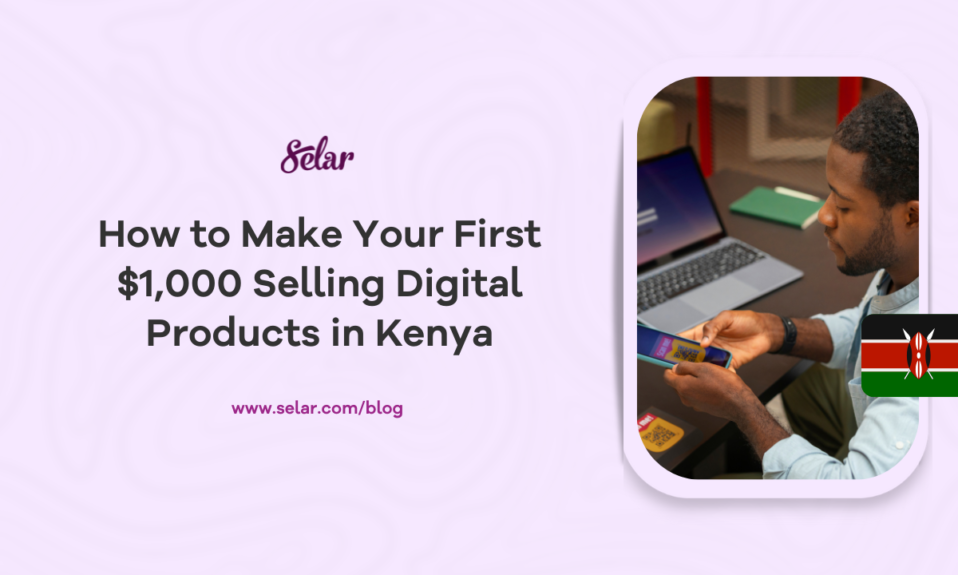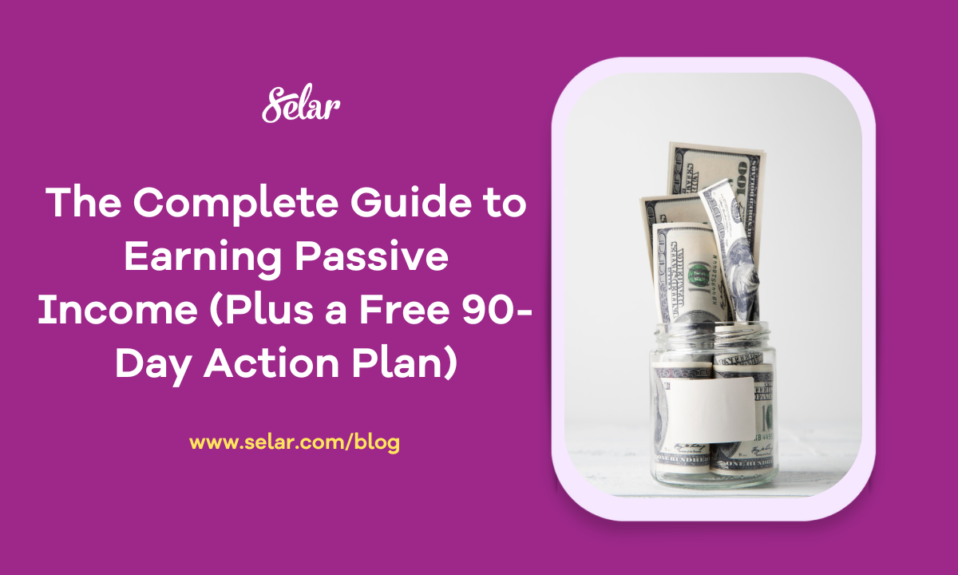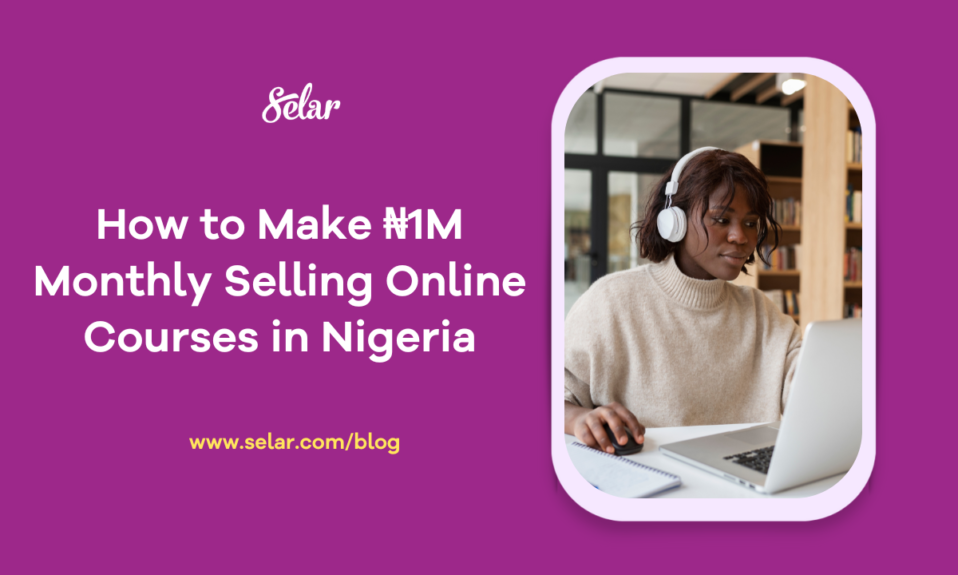
Lead Generation Strategies to Boost Digital Product Sales
You’ve spent weeks pouring your knowledge into a digital product. The value is undeniable, and the design is clean. You hit publish, and a few sales roll in.
Not bad… except the initial trickle of sales is immediately followed by silence.
You’re frustrated, especially because your product delivers real value and you know it.
But here’s the thing — it’s not always about the quality of your work. Several digital products fail in the market because nobody knew they existed or were coming out in the first place.
That’s the gap lead generation closes. It’s the difference between relying on chance and having people already waiting to buy.
In this guide, we’ll walk through practical lead generation strategies designed specifically for creators, and we’ll show you how Selar ties everything together to turn interest into consistent revenue.
What is Lead Generation for Digital Products?
Lead generation is simply finding people who care about what you’re selling and getting them to show interest or commit by giving you their contact information before you ask for the sale.
For creators specifically, that means building a pool of people who want your ebook, course, or template. These are the people who sign up for a free guide, drop their email to get updates, or click “learn more” because they see value in what you’re offering.
But then, lead generation doesn’t mean filling your list with names. It’s about attracting the right people who’d stick around, share your work, and actually buy.
So, how do you go about it?
Top Lead Generation Strategies for Digital Product Sales
While you might be tempted to treat every marketing activity as lead generation, it’s useful to look at it in two simple layers:
- Core tactic that captures leads directly by building an email or contact list
- Amplifier tactics that drive attention towards the capture point
Let’s look at both sides.
Core Tactic — Building an Email or Contact List
This is the foundation on which lead generation is built. We daresay it’s the goal of lead generation in the first place — to create a list of contacts you can reach out to/nurture later. Without that list to nurture through their buying journeys, you’re back where you started.
There are different ways you can create this list. Practically all of them involve offering free value/information or at least a sneak peek into what the larger product is about.
Here are a few useful strategies to help you go about that.
1. Lead Magnet Funnels
With lead magnets, you give away something small but useful — a guide, checklist, or template — that solves a specific part of your audience’s problem. In return, they give you their email, number or other contact information.
That’s the trade: “Here’s value upfront, and if you like this, you’ll love the full product.” This works because it removes friction. You’re not selling yet; you’re starting a relationship.
Examples:
- Free “30-Day Content Planner” before a paid social media course.
- “Freelancer Rate Calculator” before a freelancing pricing guide.
2. Free Mini-Courses or Workshops
A free class is more than a marketing tactic — it’s proof of expertise. People who show up for a 30-minute session are self-selecting as interested and motivated.
How it works:
- Pick a small but specific topic your audience struggles with.
- Host a short live session or pre-recorded mini-course.
- Collect registrations via email and you can market the product to them later on.
The key is to teach, not simply tease. Give enough value to make them trust you, but leave enough curiosity to make them want the full version.
3. Interactive Tools & Quizzes
People love anything that feels personalized and immediate. That’s why calculators, scorecards, and quizzes convert well.
How it works:
- Create a short quiz like “What’s Your Productivity Type?” or a tool like “Earnings Goal Calculator.”
- Ask users to enter their email to see their results or receive detailed insights.
- Follow up with resources or offers tied to their result.
This type of lead magnet does double duty — it gives value and segments your audience based on their answers, so your follow-ups can be more relevant. With AI coding tools, it’s easier than ever to build a simple webpage containing this sort of interactive tool or quiz.
4. Product Previews & Teasers
Product previews can turn curiosity into contact lists. Put simply, you’re telling your audience, “This is coming — want early access or special bonuses?”
How to use it:
- Share sneak peeks, sample chapters, or behind-the-scenes clips.
- Add a simple “Get notified when it drops” form.
- Send early-bird bonuses or discounts to those who sign up.
This is perfect for creators who don’t want to wait until launch day to start collecting leads. As part of your marketing material here, you could also include early testimonials from beta users/testers.
5. Community-Based Lead Capture
Communities turn casual followers into loyal insiders. A free group — on WhatsApp, Telegram, Discord, or even via an email series — becomes your private arena to connect, teach, and convert.
How it works:
- Create a niche community tied to your expertise (e.g., “Writers Who Sell” or “Side Hustlers Network”).
- Make joining the group require an email sign-up.
- Consistently share valuable content, updates, and product insights inside.
- Only after you’ve confirmed you’re offering actual value in the community do you then pitch to members to buy the product.
Unlike random followers on social media, community members have already said “yes” to hearing from you — they’re qualified, accessible leads that you can nurture directly.
The Bigger Picture
Each of these lead generation strategies works because they follow the same principle — give before you ask. Whether it’s a guide, class, tool, or community, you’re exchanging immediate, relevant value for permission to keep the conversation going.
Once you’ve captured that permission, everything else — content, social proof, ads, partnerships — simply helps you multiply it.
Amplifier Tactics — Getting More People to See Your Lead Generation Efforts
1. Paid Ads & Retargeting
Ads have the interesting potential to drive more people to the mechanisms that generate leads. Used wisely, they amplify what’s already working: your lead magnets, webinars, tools, or quizzes.
How to Do It
- Run campaigns that promote your freebie or event, especially if your product isn’t ready just yet and you’re still collecting leads.
- Retarget people who visit your Selar page but don’t buy.
- Track every click and sale through GTM or Meta Pixel for precision.
2. Collaborations & Partnerships
Collabs multiply exposure by putting your value offer in front of someone else’s audience. While they don’t generate leads directly, they give you the opportunity to reach more people who might be interested in what you’re offering.
How to Do It
- Run joint webinars, bundle your products, or co-create a freebie.
- Use one shared signup form so both creators collect leads.
- Track which audiences bring the most conversions.
3. Create Content That Attracts
Content is not exactly lead generation, but it can foster it. It’s how you build awareness, earn attention, and guide people toward your lead magnet or offer.
How to Do It
- Create helpful content that solves the same problems your paid product does.
- Use clear CTAs — “Download the checklist” or “Join my free session.”
- Repurpose across formats to extend reach.
Content creates attention. Lead magnets capture it.
How to Nurture Leads into Paying Customers
When all is said and done, collecting leads is just the start. What is really important is what happens next and how you guide those people to buy.
While lead nurturing is a topic in and of itself, here are a few useful tips to help you go about it.
- Use email sequences: Don’t stop at one welcome message. Plan a short series that educates, builds trust, and gently introduces your product. For example:
- Day 1 — deliver the freebie
- Day 3 — share a useful and actionable tip based on the freebie and gently pitch your product as a solution to the problem the tip aims to solve
- Day 5 — follow up on their progress and pitch your product further.
- Personalise where possible: Even small touches like using someone’s name or tailoring content to what they signed up for make your emails feel like a conversation.
- Add urgency and exclusivity: Limited-time offers, early-buyer bonuses, or discounts for subscribers can turn hesitation into action.
- Stay consistent: Regular, value-driven emails keep you top of mind. Even if someone doesn’t buy today, they’ll remember you when they’re ready.
The easier it is to manage your leads, the more consistent you’ll be. Nurturing is showing up with value until buying from you feels like the natural next step.
Turn Leads into Buyers with Upsells and Cross-Sells
Collecting leads is only the first half of the job; the real magic happens when you turn that attention into sales. That’s where upsells and cross-sells really come into play
An upsell encourages someone who just signed up or bought something small to upgrade to a higher-value product. A cross-sell offers them something related that complements what they already have.
With Selar, you can host your lead magnet, automatically deliver it through your email platform, and redirect new subscribers to a landing page (built right on Selar) that promotes your next offer. It’s a simple way to move people from free value to paid products without needing multiple tools or complicated workflows.
Even small, well-timed offers can significantly boost your total revenue and help you build stronger relationships with leads who are already warmed up.
From Leads to Lasting Sales
At the end of the day, sales don’t happen by accident. They happen because you’ve built a system that brings the right people in, earns their trust, and makes it easy for them to buy.
That’s what lead generation really is, not just collecting names, but creating a steady flow of people who are genuinely interested in your work. And when you nurture those leads, they stop being strangers and start becoming repeat customers.
You don’t have to piece everything together with a dozen tools. With Selar, you can capture leads, track where they come from, set up affiliates, and sell all in one place.
Start small, pick one strategy from this guide, and put it into action this week. The sooner you start building leads, the sooner you’ll stop relying on chance and start building sales you can count on.








